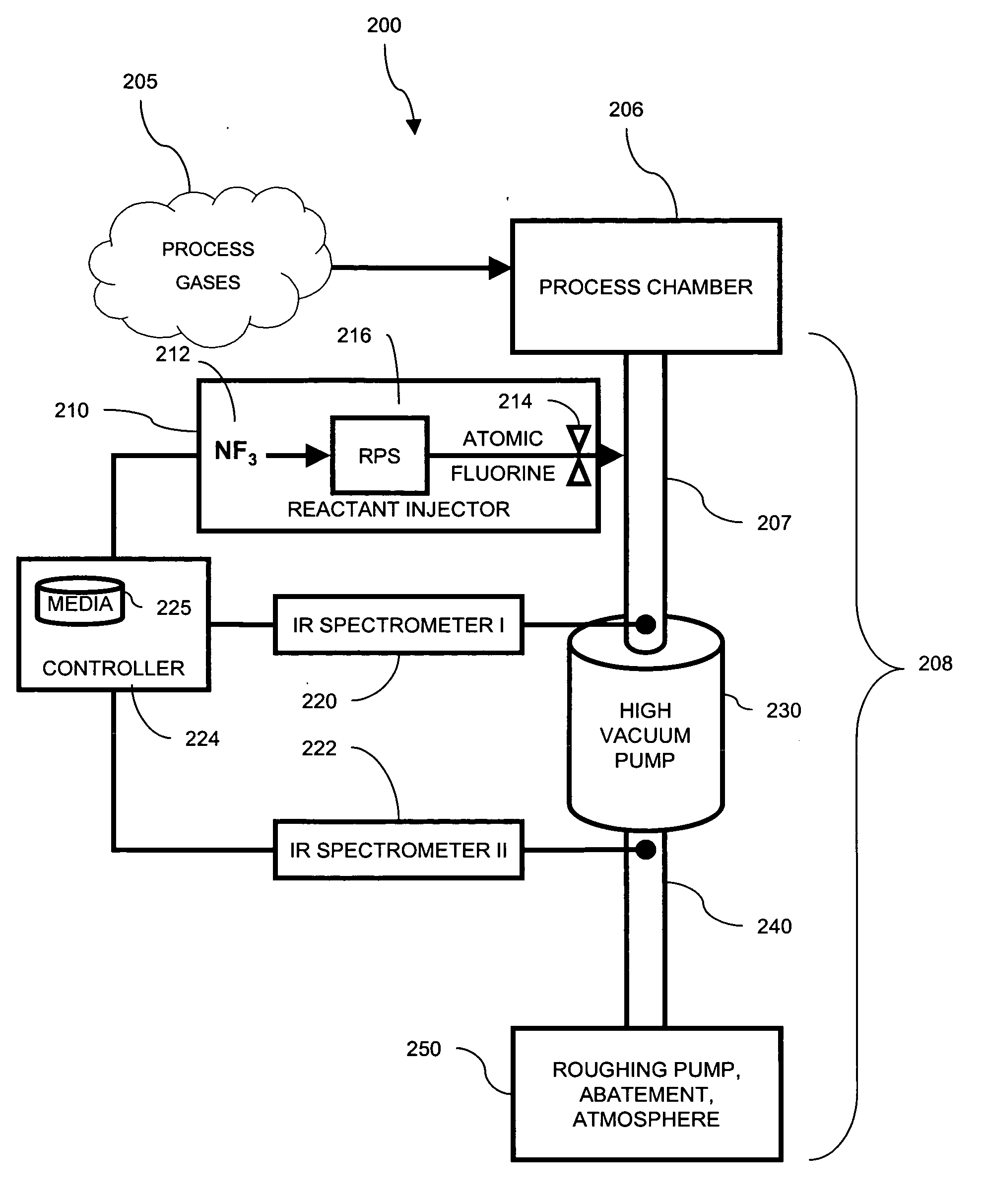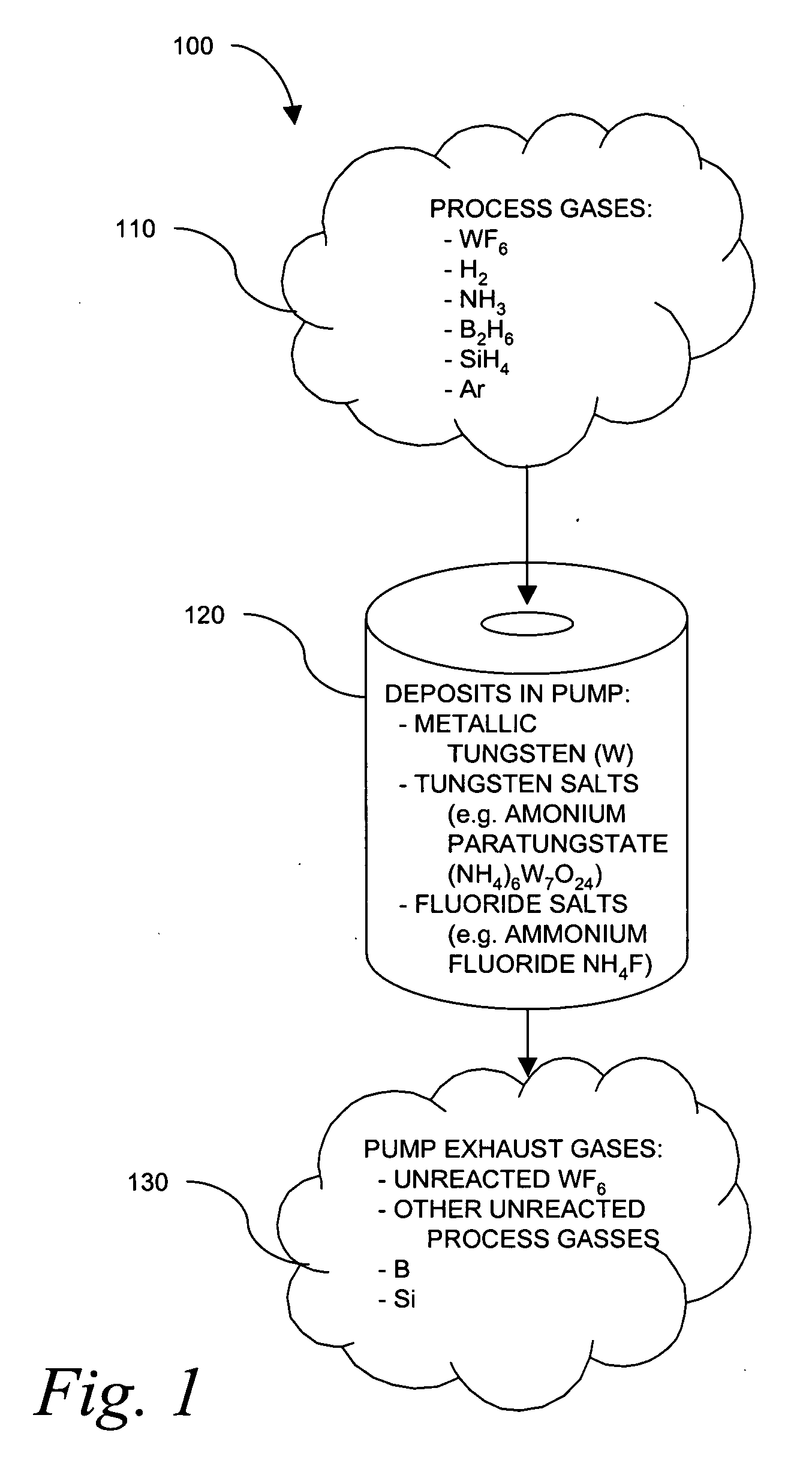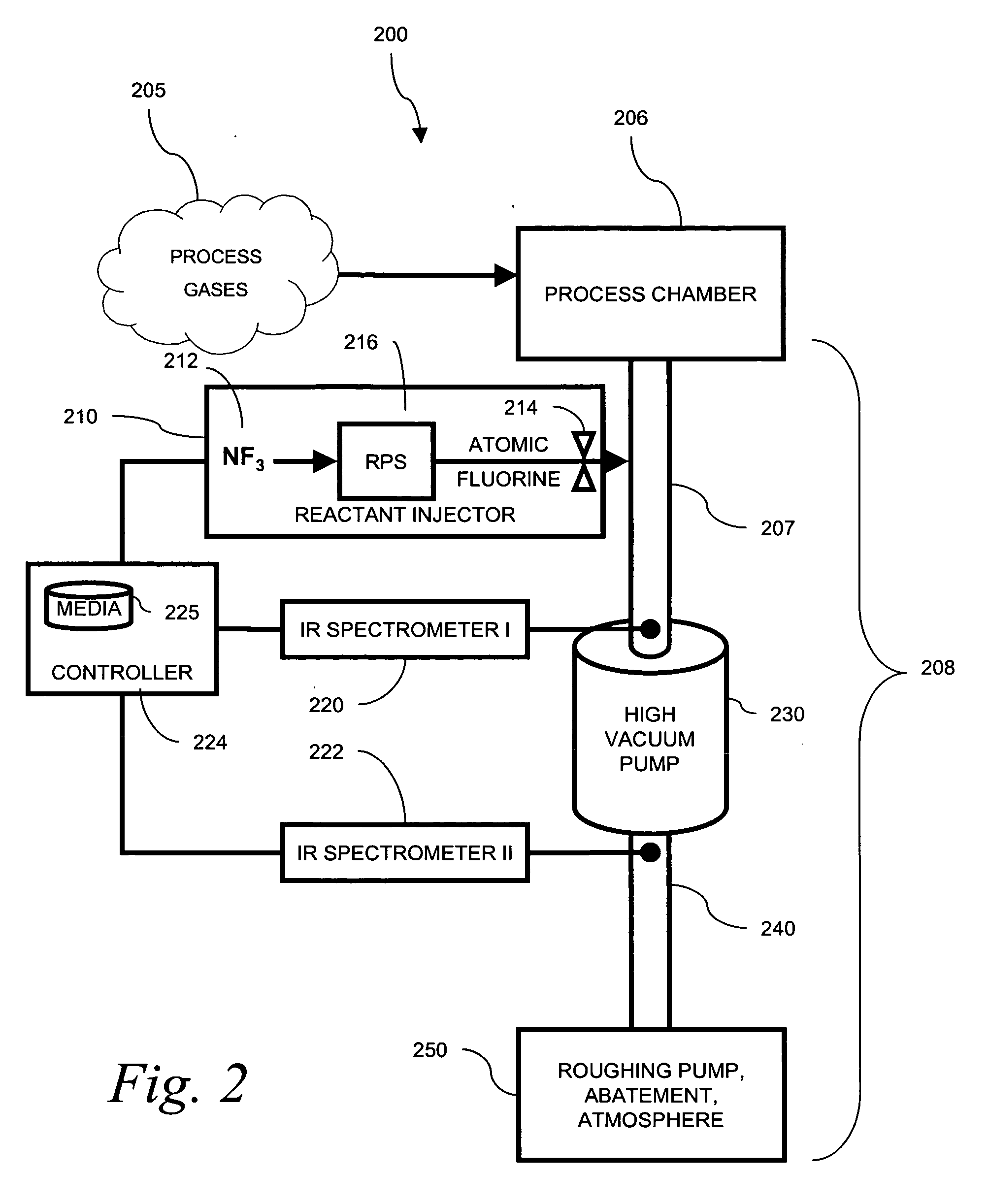Use of spectroscopic techniques to monitor and control reactant gas input into a pre-pump reactive gas injection system
a technology of reactant gas and spectroscopic techniques, which is applied in the direction of fluorescence/phosphorescence, cleaning using liquids, instruments, etc., can solve the problems of affecting the performance of the vacuum pump and other devices in the exhaust path of the vacuum processing system, affecting the efficiency and effectiveness of the pump, and affecting the performance of the vacuum pump and other devices in the vacuum processing system
- Summary
- Abstract
- Description
- Claims
- Application Information
AI Technical Summary
Benefits of technology
Problems solved by technology
Method used
Image
Examples
Embodiment Construction
[0034]In the present invention, a sufficient flow of fluorine source, or another reactant gas, is ensured by measuring a concentration of the process gas at the inlet and the outlet of a device such as a turbomolecular pump, and modifying the flow of the fluorine source accordingly. In a preferred embodiment, infrared spectroscopy is used to measure that concentration. While this detailed description describes the invention as relating to a system wherein the deposition of tungsten metal and other solids is reduced by the introduction of WF6, it is noted that the particular reactants described are merely exemplary, and that the inventive system and method are equally applicable to other reactants.
[0035]The gas phase concentration of the process gas in question is measured at both the inlet and the outlet of the pump. In the absence of a reaction in the pump that results in deposition of tungsten, the inlet and outlet WF6 signals should be equal. When reaction of WF6 occurs inside th...
PUM
| Property | Measurement | Unit |
|---|---|---|
| Flow rate | aaaaa | aaaaa |
| Concentration | aaaaa | aaaaa |
Abstract
Description
Claims
Application Information
 Login to View More
Login to View More - R&D
- Intellectual Property
- Life Sciences
- Materials
- Tech Scout
- Unparalleled Data Quality
- Higher Quality Content
- 60% Fewer Hallucinations
Browse by: Latest US Patents, China's latest patents, Technical Efficacy Thesaurus, Application Domain, Technology Topic, Popular Technical Reports.
© 2025 PatSnap. All rights reserved.Legal|Privacy policy|Modern Slavery Act Transparency Statement|Sitemap|About US| Contact US: help@patsnap.com



